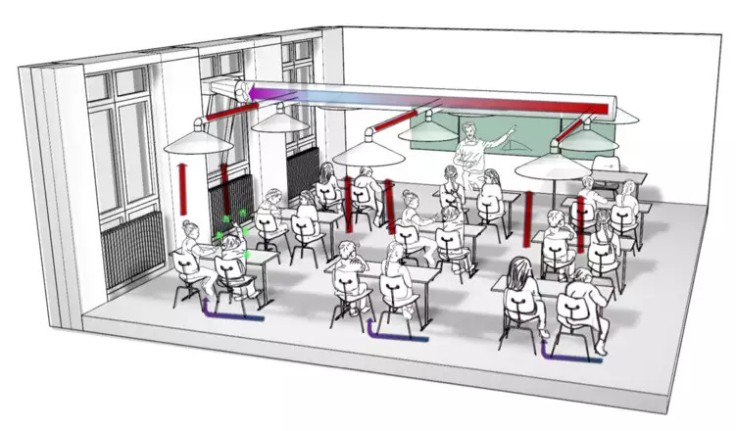Low-cost ventilator systems may soon be the key to preventing airborne viruses such as Tuberculosis, Measles, and Meningitis from further spreading in the future.

The University of San Carlos (USC) in Cebu City, Philippines and the Max Planck Institute of Chemistry (MPIC) in Mainz, Germany, announced they are developing a low-cost ventilation system to prevent the spread of airborne viruses for use in tropical indoor environments.
According to a taped report from the Philippines' Secretary for the Department of Science and Technology, Fortunato de la Peña, USC engineers would be collaborating with MPIC's Dr Frank Helleis to redesign the low-cost ventilation system to fit tropical environments in the Philippines.
Dr Helleis is also the inventor of the low-cost ventilation system.
Secretary De la Peña also added that he hopes the redesigned ventilation system will be installed in selected tropical environments like classrooms, banks and government agencies. Meanwhile, USC's project team is also considering if the new ventilation system could be used in public transportation and small manufacturing facilities.
Dr Helleis' Ventilation System
The ventilation system Dr Helleis invented in 2020 can remove around 90 percent of artificially generated aerosol particles from classrooms under laboratory conditions. The system consists of materials that can be found in a do-it-yourself store. It consists of a two-meter wide hood, a central duct, tubes, and a fan. The ventilation system replaces the air taken through an open door or another tilt-open window.

The ventilation system works by collecting the rising warm air produced by humans and directing it outside a room through a window. Cool air would then replace the warm air from another open window. The rising warm air takes any aerosol particles, and possibly coronavirus particles, with it as it goes outside the room.
Dr Helleis deliberately designed the whole system with practicality in mind. As such, his invention could be used as an alternative to expensive filter and ventilation systems widening a window's opening for a brief period. It is also space-efficient and is suitable for use in sports halls.
Some manual skills and labor are still required to install Dr Helleis' ventilation system. However, Dr Helleis and some of his colleagues prepared a construction report to help simplify the recreation process as much as possible. They also contacted companies that could produce individual molded parts of the ventilation system to make them easier to recreate.
How Viruses Go Airborne

Viruses typically go airborne through droplets produced during a sneeze or a cough. These droplets could pass copies of the virus to another within three feet from an infected person. Influenza, respiratory syncytial virus, adenoviruses, and rhinoviruses typically spread in this fashion.
Droplet nuclei, or the residuals of droplets, could also be used as a virus' means of transmission. These droplet nuclei dry and produce particles that can remain in the air indefinitely and can be transported over long distances. These particles contain potentially viable microorganisms and are protected by a coat of dry secretion. Diseases that spread using this transmission method include measles, smallpox, and Mycobacterium tuberculosis.
COVID-19, a respiratory virus caused by the SARS-CoV-2 virus, spreads through droplets from an infected individual regardless of whether they're exhibiting the virus' symptoms. The common symptoms include sneezing, cough, colds, sore throat and difficulty in breathing, to name a few.
Related article : Microchip Implant as COVID-19 Vaccine Tracker? It's Coming









